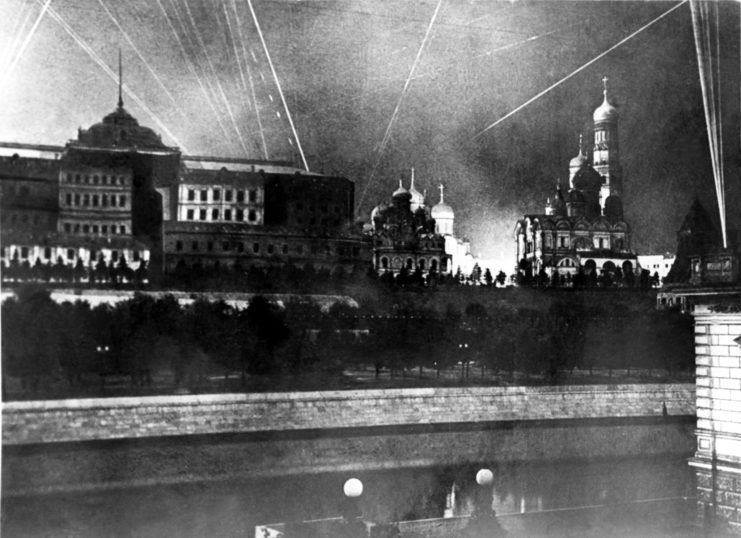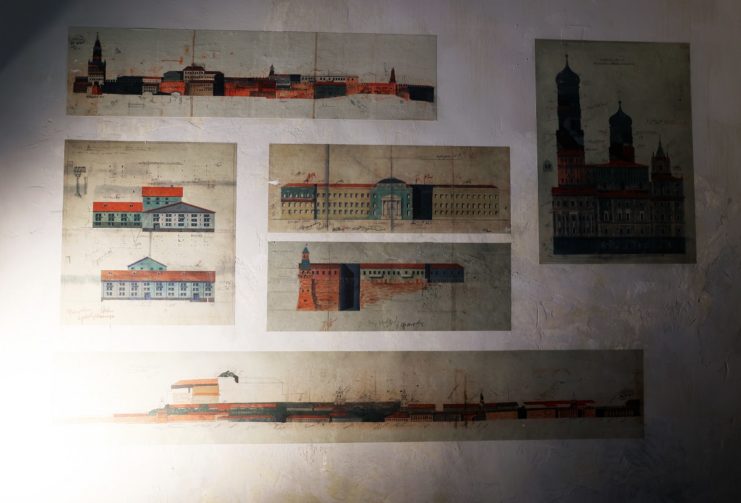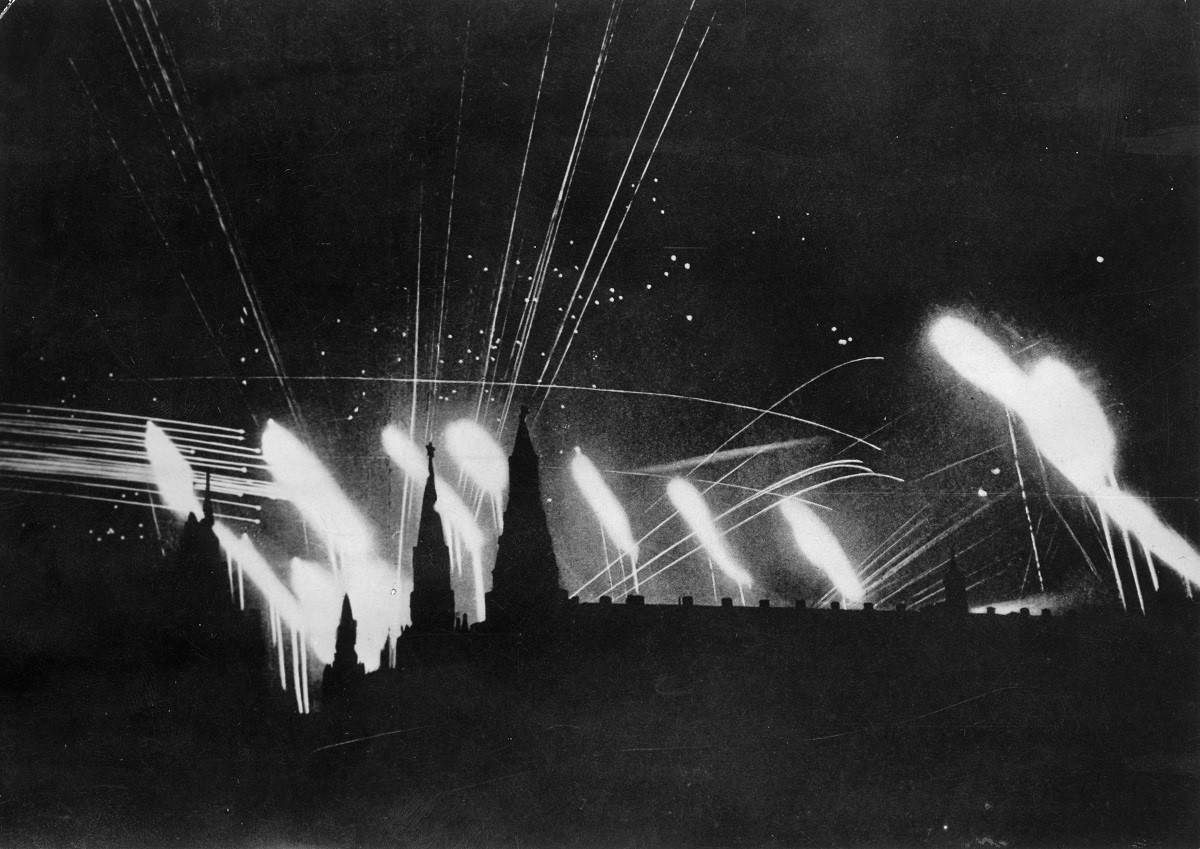During the Soviet Union’s clash with Germany during WWII, many of their cities were reduced to rubble. Historically and culturally significant buildings and artifacts were either lost, destroyed, or stolen. However, incredibly, the Kremlin survived. It was hit by over 150 incendiary bombs, an oil tank, and 15 aerial bombs over the course of eight air raids. Yet the Kremlin never fell.
How did the Soviets manage to keep such a large and precious structure out of harm’s way?
The Kremlin during the war

The Kremlin is a large fortified complex at the center of Moscow, and also serves as the official residence of the president of the Russian Federation. Its impressive walls were constructed at the end of the 15th century, and contain some of the most incredible architecture in the world.
Although the area is open to the public, it is also home to some of the most powerful and important political buildings. As the heart of the city and a powerful symbol of both Russian and Soviet power, it is an extremely significant and valuable location. As a result, keeping it safe during WWII was of the utmost importance.
From 1938 to 1953, Nikolay Spiridonov served as the commandant for the Kremlin. Spiridonov had concerns about the safety of the location as soon as the war began, and sent a message to the People’s Commissar for Internal Affairs – and absolute monster – Lavrentiy Beria. With this, Beria kickstarted work on hiding the Kremlin.
However, hiding the 2,960,000 sq ft fortress was no simple job. In addition to its sheer surface area, the Kremlin contained buildings of varying height, including the 260 ft tall Troitskaya tower.
On July 22, 1941, fears for the Kremlin’s safety were justified when a German 250 kg bomb smashed into the Kremlin Palace. Fortunately, the bomb did not explode, but it highlighted the need to protect the complex.
Covering the Kremlin

To hide the Kremlin, it was literally either covered over or disguised, to make it indistinguishable from the rest of Moscow. High-profile Soviet architect Boris Iofan came up with the disguise.
All roofs in the Kremlin were painted a dark, rust-colored brown to make them blend in with other Moscow rooftops from the air. The actual grounds of the Kremlin, most of which were cobblestone, were covered in sand, while tents painted to look like rooftops were positioned above the complex’s gardens. Even the towers themselves were painted in different colors and covered by wooden structures.
Lenin’s mausoleum was particularly important, so his body was transported away from Moscow during the war and the mausoleum was hidden by a large wooden tent.
The rest of Moscow either leaves or digs in
While work on the Kremlin did about as much as possible to protect it, the rest of Moscow was still vulnerable. The city’s population of nearly 5 million were put to work building defenses and fortifications to protect it. Thankfully many Muscovites were put through civil defense training before the war, so when a few years later it was time to defend the city, they were prepared.
Hundreds of thousands of citizens built obstacles, barricades, and defenses, while many more joined fire squads. Two defensive lines were even built outside the city.
The work included adding fake buildings all over the city and disguising real ones. Uninhabited areas received fake streets and buildings, while real ones were covered over to look like soil from the air. Fake wooden structures built to resemble houses and buildings from the air were placed onto the Leningrad highway.
In one instance protective camouflage was used to make the Bolshoi Theater look like a row of common apartment buildings.

To protect factories, fake carbon copies were created and erected in areas far away from where they really were, while the originals were camouflaged. These fake factories were often lit up at night, and many German bombs landed harmlessly on them.
In October 1941, with German forces approaching, Stalin ordered that the government evacuate the city. This caused an immediate panic within the general population, who desperately tried to flee the city, filling up train cars and slowing down evacuation efforts. Stalin announced that he would be staying in the city, which calmed the situation down.
When the Germans arrived soon after, they were met with a prepared and fortified city. What they expected to be a steamroll victory slowed down to a war of attrition, one that they were never going to win.
